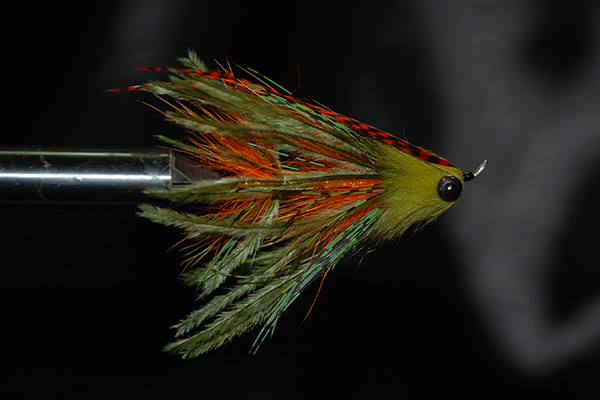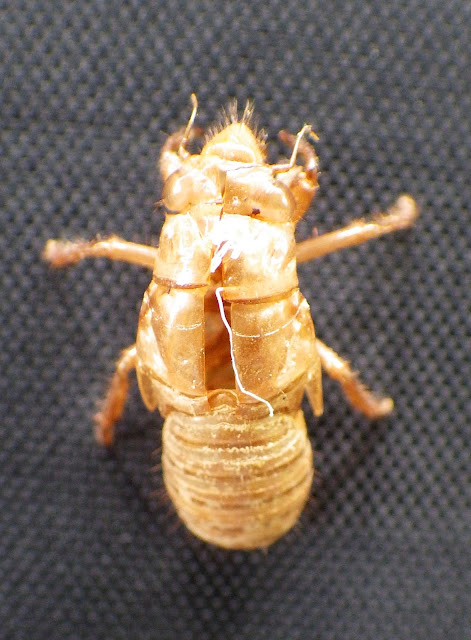A week or so ago we decided to get serious and rent a boat at Griffey. It took a brief wait to launch, and then it was non-stop action. Sebastian was a tiger on the reel, cranking in fish after fish. That crappie is the biggest fish he's ever caught, and, as you can tell by his expression, he had to dig deep to bring it in. After all that, I wonder if he'll ever be content to bank fish again.
Tuesday, May 30, 2017
Digging Deep
Labels:
family,
Griffey Lake,
Sebastian,
take a kid fishing
Sunday, May 28, 2017
The Wild Steelheader, 5-26-17
Labels:
conservation,
environmental issues,
steelhead,
The Wild Steelheader,
Wild Steelheaders United
Thursday, May 25, 2017
Save Bristol Bay: Call Scott at 202-564-4700
SAVE BRISTOL BAY from Mark Titus on Vimeo.
It was just announced that President Trump and EPA Administrator Scott Pruitt struck a backroom deal with a foreign mining company that wants to build an open pit mine near some of our nation's most precious waters. This announcement could remove proposed protections for Bristol Bay, Alaska. Call EPA Administrator, Scott Pruitt and voice your concern: 202.564.4700
Labels:
Alaska,
Bristol Bay,
conservation,
environmental issues,
salmon
All Cicadas, All the Time
Cicada Postscript
I worked up a cicada imitation this afternoon using what materials I had at hand. I was eager to try it out, so as soon as Kim got home from school I headed for Yellowwood.
It had been raining all day, and it was raining when I got there.
As soon as I kicked out into the lake it quit.
I worked down the shoreline with various flies, on top and down below. I got one or two sniffs from small bluegill.
When I arrived at the place I had caught three bass in a row I tied on the cicada. There were no bass there this time, but on down a ways I put the fly right next to the weed line, as I was doing, and gave it a good twitch or two. There was a swirl and a good take. It was a nice bass. Just what I was looking for. So I wondered: did it think the fly was a cicada? No way to tell, really.
I continued fishing down the shoreline. I plopped the fly next to the weeds and before I could twitch it a fish sucked it in. No splash, no hit, just an efficient, no-nonsense capture of prey. It was a strong fish, and turned out to be the best bass of the year so far.
Now I was thinking that two bass in short order may indeed be an indication that they know what a cicada looks like, they like to eat them, and my fly fooled them. Well, that's what I like to think anyway.
It's a relatively simple fly. Black deer hair for the body, black rubber legs, copper crystal flash for the wings, and fluorescent orange thread to give an impression of the red eyes. What I need to improve the fly are some orange legs, red plastic rods for making eyes, and maybe a lighter wing material.
Still, I couldn't be happier with this version's performance. If you tie flies you know the deep satisfaction that comes with getting up from the vise with a fly you designed and tied and going out and catching just the fish you were hoping to catch.
I crossed over to the other side. I had gotten to the lake later than usual, and the heavy overcast would mean early dark, so my time was limited.
I fished the cicada, hoping for more bass, but the bluegill liked it too. It seemed that every other fish would inhale the fly, meaning I would have to take the time to perform surgery with the hemostats.
I finally ran out of time and made the long kick back to the boat ramp. It was full dark when I got there.
Just as I got to the truck and began to load up the rain started again.
Labels:
cicada imitations,
fly tying,
largemouth bass,
rain,
Yellowwood Lake
Wednesday, May 24, 2017
Cicadas: They Make Me Think of Fishing
The cicadas have come out of the ground and invaded our world. Sebastian and I had seen a few nymphal husks on a tree a week or more ago. Today when I went to load my float tube in the truck I found that the full hatch was underway, and that the tube had been used as a handy launching pad.
I called Sebastian to show him, and we went on a cicada expedition. We found many, many more husks on the porch posts, the shed walls, the bushes and the trees--basically everywhere. There were shoals of husks lying in empty flower beds; the dirt was riddled with emergence holes. We found some dead and dying adults, some with withered wings, one stuck in the husk, and others seemingly in good condition. We picked one up and it fluttered its wings, perhaps just then drying out sufficiently for flight. We left it on a bush. And all the time the lucky ones that had everything go right in their great escape were in the trees overhead sawing away.
Quite a phenomenon. Sebastian was fascinated by it all. He wanted to collect as many husks and dead adults as possible. I picked a small container and fortunately he was satisfied when it was full.
According to some research I did, these are periodical Red Eyed Cicadas. Based on a comparison of the calls and choruses of the three possible species I think these are Magicicada Cassini. They supposedly belong to Brood X (10) and are emerging several years early, which makes them "stragglers."
This is from Cicada Mania:
Brood X stragglers have emerged in Tennessee (around Knoxville), Washington D.C., Virginia (counties around D.C.), Maryland (counties around D.C.), Ohio (around Cincinnati), Delaware, Indiana, Kentucky, Pennsylvania, & New Jersey (around Princeton)! They are chorusing in many locations.
This year precursors to Brood X are emerging or will emerge in small to large numbers in D.C., Delaware, Georgia, Illinois, Indiana, Kentucky, Maryland, Michigan, Missouri, New Jersey, New York (Long Island), North Carolina, Ohio, Pennsylvania, South Carolina, Tennessee, Virginia, and West Virginia.
Note: because of the significant number of cicadas emerging ahead of time, this might be an acceleration event. Periodical cicada accelerations occur when a significant group of an established brood emerge in years ahead of the main brood, and sometimes the accelerated group are able to reproduce and create what is essentially a new brood.
Wow! A new brood!
Of course, all of this makes me think of fishing.
I have an old Orvis fly that is supposed to be a cicada imitation. It's the last one I have of whatever "brood" it was a part of. I've used it here within the last two weeks and have gotten some bumps from bluegill but no hookups. Maybe the cicada hatch hadn't impacted the lake yet. But now, with cicadas coming out of our ears, I'd like to try again.
I also used this fly in Washington when I lived there. One of the memories I have of the fly is of those Trout Lake trout whacking it so hard it would fly up into the air. And yes, contrary to the notion that cicadas are an exclusively eastern phenomenon, we would always see a few out there in the west around May and June.
Here's a cicada I found floating on Trout Lake one Spring afternoon, and here's the trout that ate that old Orvis fly. That was one of my perfect Trout Lake moments.


I'm also remembering a pretty little film about fishing the cicada hatch on the Green River in Utah. I'll throw that on here as the perfect closing, and when I'm finished watching it again I'll begin thinking about tying up some of the cicada flies they were using--with red eyes.
Labels:
cicada imitations,
cicadas,
fly tying,
Green River,
Rainbow Trout,
Utah
Tuesday, May 23, 2017
"Instructions On Not Giving Up" by Ada Limon
"Backwater" by Alexander Grishkevich, 2001
More than the fuchsia funnels breaking out
of the crabapple tree, more than the neighbor’s
almost obscene display of cherry limbs shoving
their cotton candy-colored blossoms to the slate
sky of Spring rains, it’s the greening of the trees
that really gets to me. When all the shock of white
and taffy, the world’s baubles and trinkets, leave
the pavement strewn with the confetti of aftermath,
the leaves come. Patient, plodding, a green skin
growing over whatever winter did to us, a return
to the strange idea of continuous living despite
the mess of us, the hurt, the empty. Fine then,
I’ll take it, the tree seems to say, a new slick leaf
unfurling like a fist to an open palm, I’ll take it all.
Labels:
Ada Limon,
Alexander Grishkevich,
art and illustration,
poetry and poets,
poets.org,
The Wood Between
Growing On Me
I came on my own to Griffey Lake and had a lovely evening. It felt like summer. I had found another yellow streamer, and it was as effective as it had been at Yellowwood.
Off the first rocky point as you head north along the west shoreline I found three bass in quick succession. I thought I might have found the glory hole, but that remains an open search.
I added a couple more sunfish species to my catch list with some Pumpkinseeds and Redears. I still miss trout, and I was still looking for that big bass, but the sunfish family does grow on you the more you catch them.
Labels:
bluegill,
crappie,
Griffey Lake,
largemouth bass,
pumpkinseed,
redear
Subscribe to:
Posts (Atom)










 Over the past century the Columbia River was transformed from a brawling frothy beast to a series of long flowing reservoirs. The dams responsible for these changes have allowed us to build cities and farms, provide cheap power and even helped win World War II. But the cost-benefit analysis for these dams is not so rosy when it comes to their effects on salmon, steelhead, and water quality.
Over the past century the Columbia River was transformed from a brawling frothy beast to a series of long flowing reservoirs. The dams responsible for these changes have allowed us to build cities and farms, provide cheap power and even helped win World War II. But the cost-benefit analysis for these dams is not so rosy when it comes to their effects on salmon, steelhead, and water quality.

 Ever feel overwhelmed by all the acronymns in any piece of scientific literature? While some commonly used acronyms are readily understood and recalled, others are more obtuse and challenging - even for seasoned biologists.
Ever feel overwhelmed by all the acronymns in any piece of scientific literature? While some commonly used acronyms are readily understood and recalled, others are more obtuse and challenging - even for seasoned biologists.







































